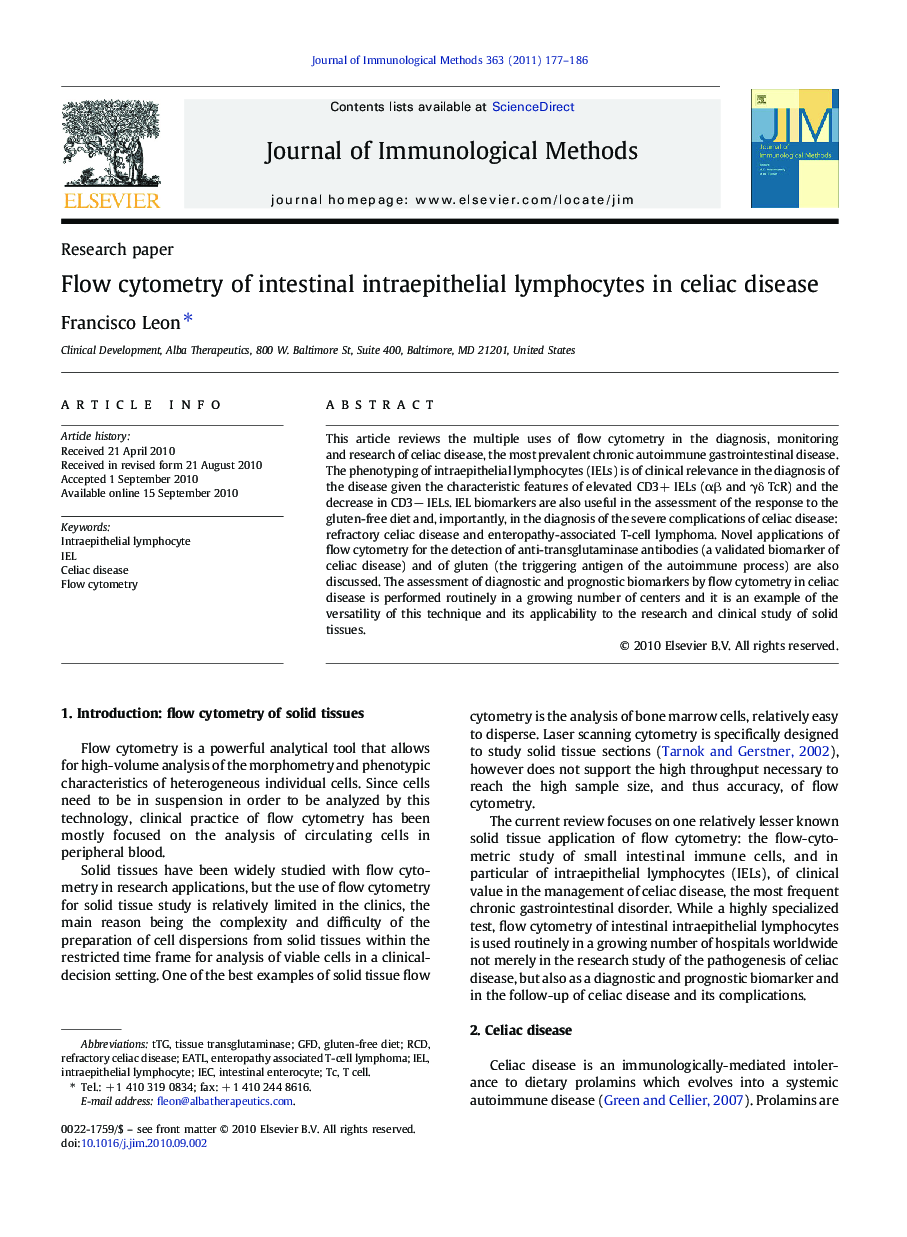| Article ID | Journal | Published Year | Pages | File Type |
|---|---|---|---|---|
| 2088502 | Journal of Immunological Methods | 2011 | 10 Pages |
This article reviews the multiple uses of flow cytometry in the diagnosis, monitoring and research of celiac disease, the most prevalent chronic autoimmune gastrointestinal disease. The phenotyping of intraepithelial lymphocytes (IELs) is of clinical relevance in the diagnosis of the disease given the characteristic features of elevated CD3+ IELs (αβ and γδ TcR) and the decrease in CD3− IELs. IEL biomarkers are also useful in the assessment of the response to the gluten-free diet and, importantly, in the diagnosis of the severe complications of celiac disease: refractory celiac disease and enteropathy-associated T-cell lymphoma. Novel applications of flow cytometry for the detection of anti-transglutaminase antibodies (a validated biomarker of celiac disease) and of gluten (the triggering antigen of the autoimmune process) are also discussed. The assessment of diagnostic and prognostic biomarkers by flow cytometry in celiac disease is performed routinely in a growing number of centers and it is an example of the versatility of this technique and its applicability to the research and clinical study of solid tissues.
